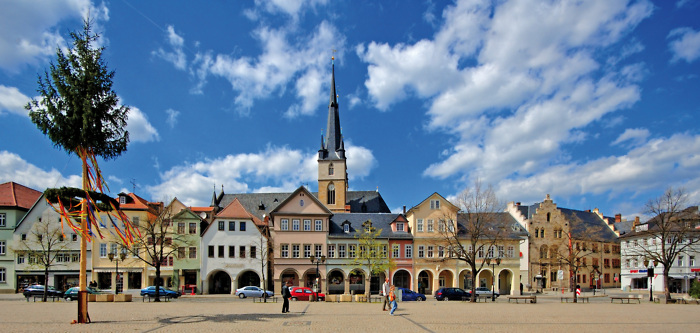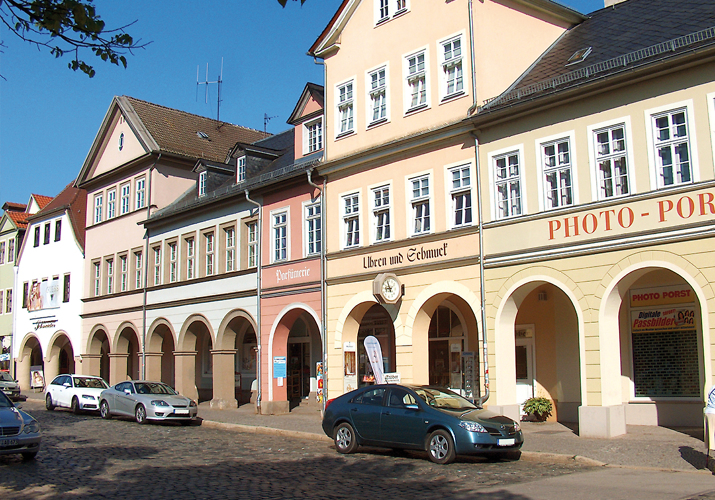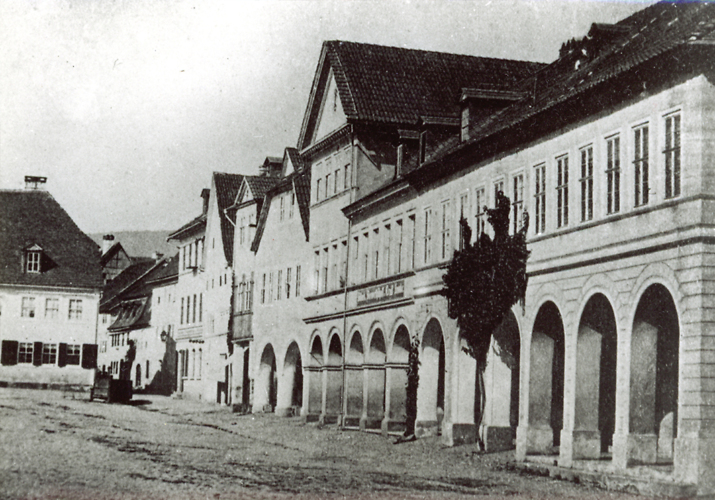The Lieden (Markt 14-19)
The distinctive row of houses with their characteristic arcades was built right back in the Middle Ages. The houses replaced the stands and stalls of the tradesmen. They take their name from the German word “Läden”, meaning shops.
Originally the merchandise was sold through the windows, which, at the end of the day were secured with shutters or “Fensterläden“. Later, shops with counters appeared. The first recorded tradesmen in the town were bakers and butchers, and later came the blacksmiths, tanners, coblers, cart builders as well as potters, clothmakers and weavers. Bread and meat were considered very wholesome. The farmers did not have many animals, and when slaughtering took place in November and December, every single part of the pig was used. Salted and smoked meats were conserved in salt barrels for use as winter provisions. Sausages and other fresh produce, on the other hand, had to be eaten without delay. The sheep was mainly used as provider of wool. Cattle were needed for dairy products and as working animals. Farmers slaughtered them only when they had no further use for them. Calves were rarely slaughtered. Their young, tender meat, as well as that of wild game, was reserved for the aristocracy. Domestic and wild poultry was considered particularly fine. Fridays and Saturdays were fundamentally meat-free days. This meant that people in the Middle Ages only ate meat on 220 days of the year.
In the 19th Century, the timber-framed buildings at the right hand end of the “liden” were replaced with new stone buildings in late classical style. A few of the buildings on the left hand side date back to the 16th Century.
Walk past the “Liden” to the right, as far as the Kreissparkasse Bank and turn left in the direction of St John’s Church in “Kirchplatz”.
Until the 16th Century “Kirchplatz” or “Church Square” was a cemetery. This meant that one buried one’s dead in the middle of the town while the Liden market was in full swing nearby. At funerals the social standing of the person was important. The higher one’s esteem, the nearer to the church wall one was buried. Nowadays the Saalfeld citizens no longer need to step across God’s Holy Acre to reach the church. It was perhaps not a bad thing in those days for one was most likely to be reminded of the Last Judgement in this way.
Now please make your way to the main portal of St John’s Church.


